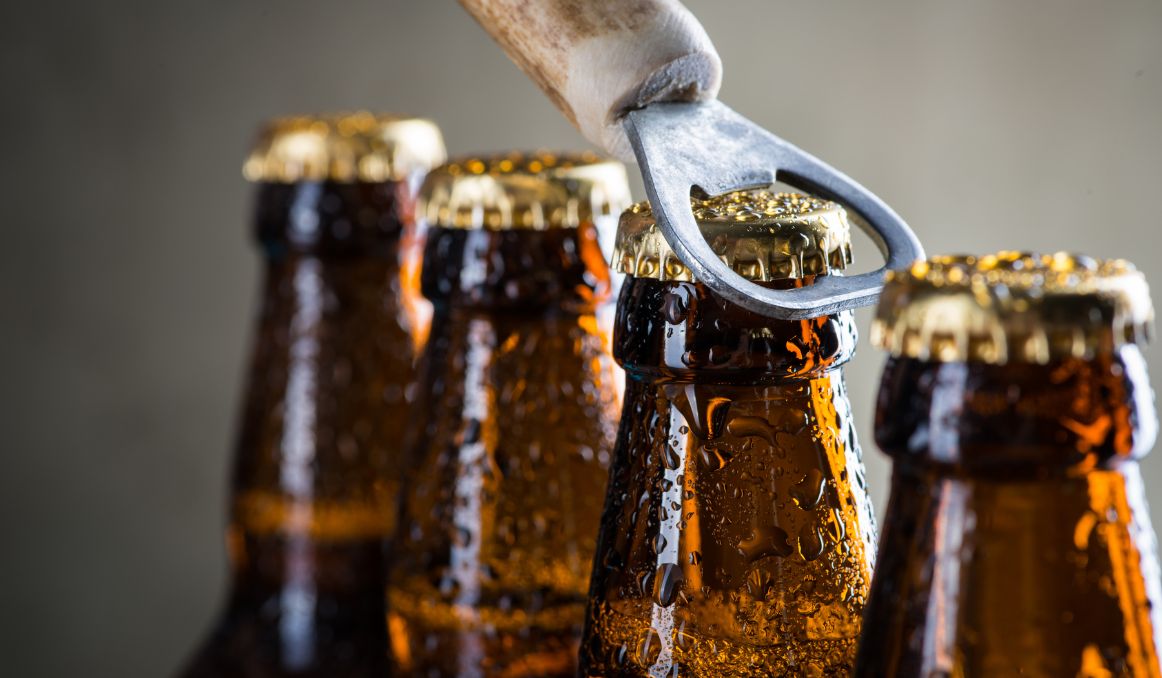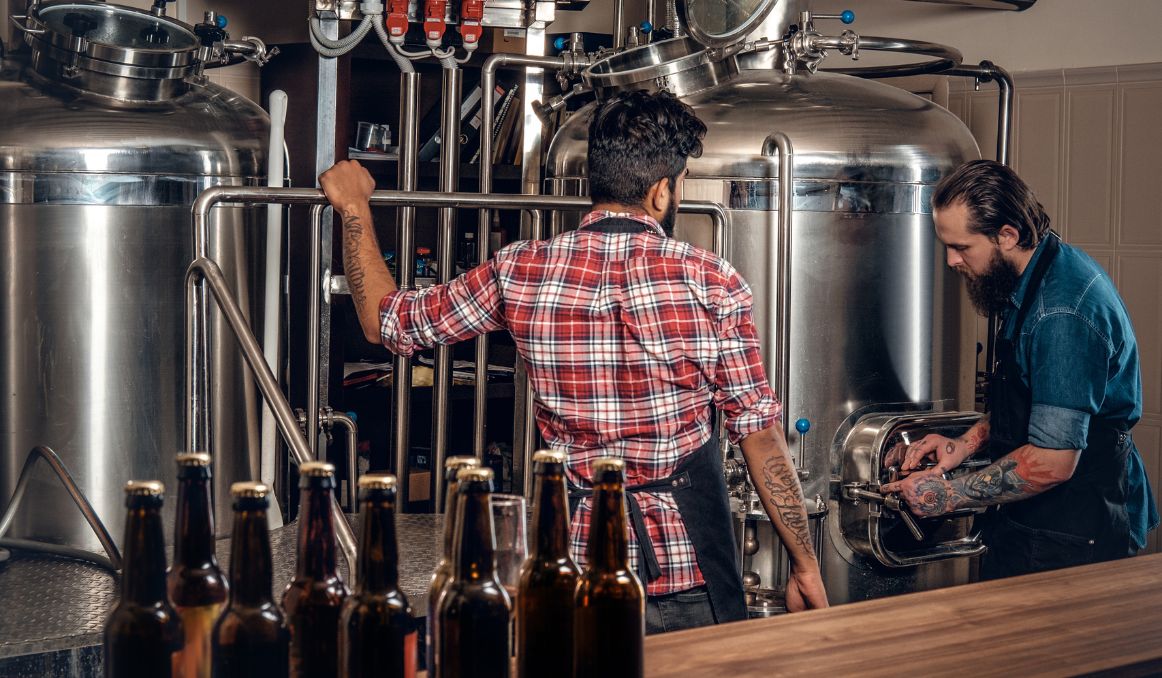How Much Yeast to Add for Bottle Conditioning Beer
Bottle conditioning beer is a time-honored tradition that is largely credited to Belgian brewers.
It offers beer drinkers the refreshing carbonation that has come to be expected from a great beer.
But how is bottle conditioning performed? Under what circumstances? And using which ingredients? For example, how much sugar do you add, and how much yeast to add for bottle conditioning beer?
Getting the exact measurements and processes down to effectively bottle condition beer can be tricky. So it helps to have a bit of background.

The Role of Yeast in Beer
Yeast has been around as a single celled living organism for millennia, long before human hit the earth scene.
In all its time on this planet, it has had a single job – to find sugar and convert it to alcohol and carbon dioxide.
As far as we know from anthropologists, beer was a happy accident thanks to the prevalence of yeast in the environment.
Wine was obviously the first beloved beverage yeast created for us, and cider likely came next, for those two drinks were easily discovered.
All it took for wine was for a grape harvest to be crushed and left out too long.
As if by magic, the grape juice is converted to a delightfully euphoric beverage to accompany meals.
Cider is much the same.
Crush some fruit – apples or pears – and leave the juices to sit for a week or so.
Before you know it, you have a slightly bubbly alcoholic apple or pear juice.
Beer, however, is a bit different.
The grain required to make beer is not rich in sugars and is not simply crushed and left in its own juices.
Rather, anthropologists think that beer was a happy accident.
Imagine a woman out harvesting her grain gets caught in a sudden storm and runs for cover, leaving her basket of grain out in the rain.
When she returns several days later, she finds an actively bubbling rainwater covering her grain.
Never one to waste precious resources from thousands of years ago, she would have brought this fresh rainwater in to serve to her family, maybe taking only small sips at a time.
The result was a happy, euphoric family that had a new favorite beverage to serve at meal times.
Over time, beer became a preferred beverage for entire families as it cleaned out the toxins that ran naturally in rivers and streams as the alcohol levels rose during fermentation, and brewers began to serve ale in pubs for weary travelers.
Perfecting this brew did not take much effort or energy as it was merely a matter of learning to roast the grain first, in order to convert the rich starches into sugars, and then crack or grind the grain before boiling it in water, in order to fully expose those sugars to the wort, kind of like steeping a bag of tea.
Yeast is then naturally attracted to this wort and ferments those sugars to alcohol and carbon dioxide.
The problem?
How to maintain carbonation.
Bottle Conditioning for Carbonation

Around the 1400s and 1500s world explorers began figuring out how to bottle beer so they could take it with them on their voyages. The trick very early on was how to maintain carbonation.
You see, yeast of course offers carbonation during fermentation; it is, after all, the result of the creation of carbon dioxide.
But as the beer undergoes primary and then secondary fermentation and is exposed to the air, much of that carbonation is lost, so that ultimately, you may end up with flat beer.
And no one likes flat beer.
Get access for free to our Complete Beer Carbonation Guide!
So brewers began “bottle conditioning,” a process that simply calls for the addition of sugar and sometimes yeast right before bottling fully fermented beer so that when the drinker does open the bottle, they get that familiar release sound of carbonation and the full effects of fresh bubbles.
The thing many beginning brewers do not realize is that you do not actually have to add yeast in most cases for bottle conditioning.
During the fermentation process, your yeast does not die. If fact, it multiplies, providing, in most cases, even happier, healthier, and more robust yeast by the end of fermentation.
It is not dead; it is merely lying dormant because it has consumed all of the available sugars.
So, to effectively bottle condition, all you really need to do is pitch fresh sugar into your fermented beer, gently stir it to activate your dormant yeast, and wait about an hour.
The general rule of thumb is to add ¾ cups of corn sugar to 5 gallons of fresh beer.
By then, you should have fizzing, bubbling beer once again ready to be bottled.
Be sure to use strong bottles when you bottle condition as most thinner bottles used for beer will explode with the excess carbonation.
Many Belgian brewers prefer to use classic champagne sized bottles for this reason.
The exception to the “no yeast needed” rule is if your beer has been racked multiple times or filtered excessively, in which case you may have filtered out most of your live and active yeast.
In this case, you can pitch fresh yeast, the general rule being 2 grams, or about 1 teaspoon, of fresh yeast to 5 gallons of fresh beer.
(Check out our Yeast Target Pitch Rate Calculator!)
You will want to “start” your yeast before pitching it into your beer.
To do this, mix ¼ cup of dried malt extract and 3 cups of water. Bring to a boil and allow to cool overnight, then add 1 teaspoon of the yeast of your choice.
Soon enough you should have an active, bubbling yeast starter ready to pitch into your 5-gallon brew.
Cheers!
Are you still pitching fresh yeast every time? By reusing your yeast, you can save up to hundreds of thousands of dollars per year on just yeast alone!
Join the hundreds of brewers from all around the world using the Smartest Automated Yeast Cell Counter! Request a Free Demo Account today and experience firsthand how Oculyze can take your brewery to the next level!
Sources:
- https://www.homebrewersassociation.org/how-to-brew/mastering-the-art-of-bottle-conditioning/
- https://homebrew.stackexchange.com/questions/21703/how-much-yeast-to-add-for-bottle-conditioning
- https://byo.com/article/on-the-yeast-guide-to-bottle-conditioning/
Stay on top on important fermentation insights – subscribe to our monthly newsletter and receive a hand-picked selection of our most relevant articles straight to your inbox.
Never miss a beat and get real time updates with a new article each workday by subscribing our social media channels.
Instagram | Facebook | Twitter | YouTube


